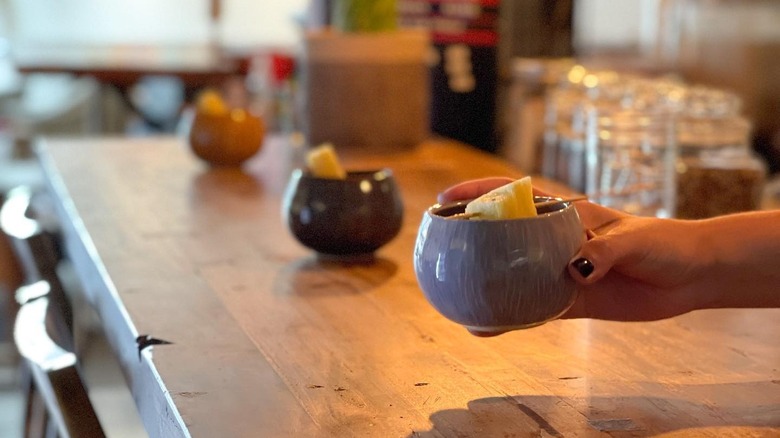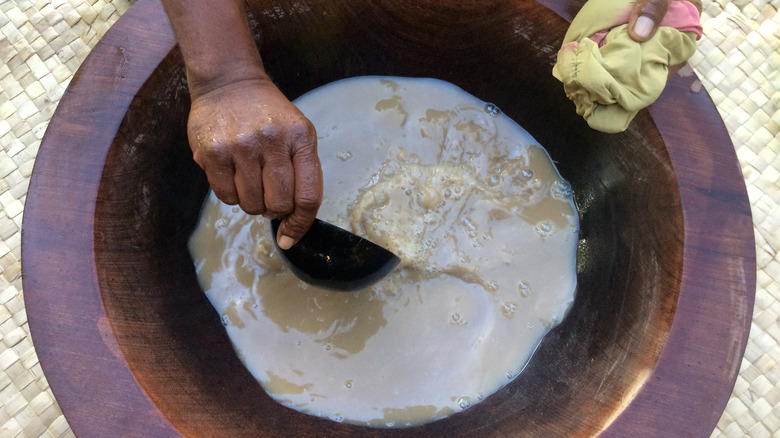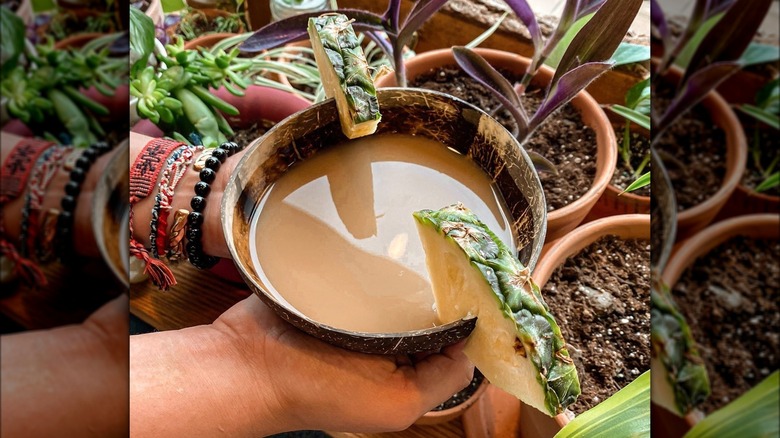What Are Kava Bars And Why Have They Been Popping Up Everywhere?
The next time you're wandering through a new downtown area, feeling lured by the familiar glow of a bustling, neon-lit bar, you may want to consider the new booze-free option on the block. Nope, it's not a diner or a dispensary — it's a kava bar. These trendy spots aren't serving up drinks with alcohol, they're made from kava, a medicinal plant from the pepper family. And the best part? Kava offers relaxation and a sense of euphoria, minus the dreaded hangover.
This might sound like a health gimmick, but kava boasts a rich history of ceremonial and social use across the islands of the South Pacific. Traditionally served as part of a ritual kava ceremony during important gatherings, the drink has been revered for its ability to foster a sense of connection and calm. In today's stressful world, those very qualities are very sought after. Kava bars offer an oasis of sorts — an escape from the typical alcohol-centric bar, a glimpse into another culture, and a healthier choice for those looking to unwind.
Kava's cultural roots
Kava is more than just a modern alcohol alternative; it's a cultural fixture in many Pacific Island societies. The distinctive drink is made by grinding or pounding the dried root of the Piper methysticum plant into a fine powder, then mixing it with water and straining the mixture to produce a drinkable liquid. Kava ceremonies, involving the methodical preparation and communal sharing of the drink, underscore its importance in fostering social bonds and marking significant occasions, ranging from spiritual communion to pre-battle gatherings.
As kava makes its way into bars beyond the Pacific Islands, understanding and respecting its rich cultural heritage is key. This approach transforms the act of drinking kava into an expression of cultural appreciation rather than appropriation. While the settings in kava bars may not strictly adhere to traditional ceremonies, some incorporate elements of these rituals or can speak to the history of the drink, offering a unique and culturally rich experience. This acknowledgment and respect for kava's cultural roots play an important role in the growing appeal of kava bars as spaces for cultural exchange and relaxation.
Are kava bars the pubs of the future?
When you visit a kava bar today, you'll experience a blend of traditional and trendy. The flavor of earthy and somewhat bitter kava is often an acquired taste, so modern kava bars have become creative in their offerings. From the traditional brew to coffees and kava cocktails, these establishments offer an array of choices for first-timers and seasoned kava enthusiasts alike.
The increasing popularity of kava bars mirrors wider trends in holistic health and sober-curious movements. Although traditional bars aren't going anywhere, alternatives to alcohol like non-alcoholic wine and booze-free bars are becoming more mainstream. These trends reflect a growing interest in healthier lifestyle choices and inclusive social environments. Kava bars fit snugly into this evolving landscape, offering a space not just for relaxation, but for exploration of different cultural practices and healthier socializing alternatives.
However, despite the growing popularity of kava bars, it's important to consume this drink with caution. The National Institutes of Health and the Australian Alcohol and Drug Foundation note side effects like dizziness, upset stomach, and liver damage with habitual use. Therefore, it's important to enjoy your kava in moderation, just like you would similar beverages.


